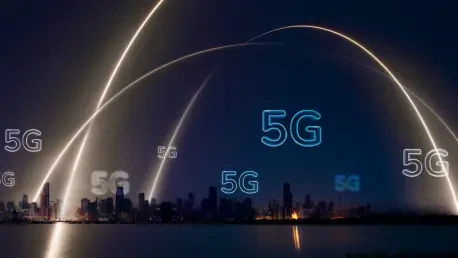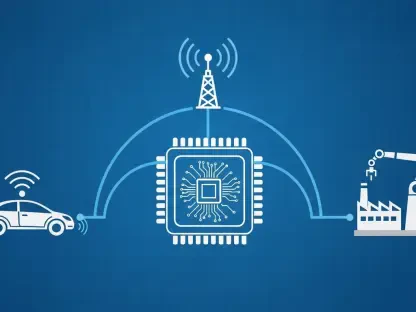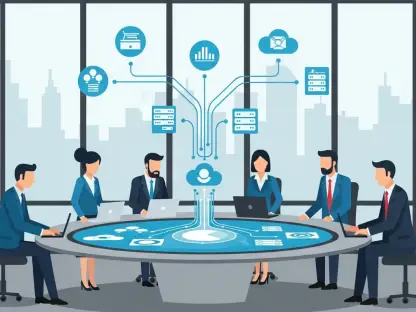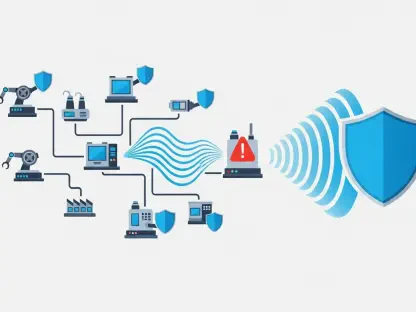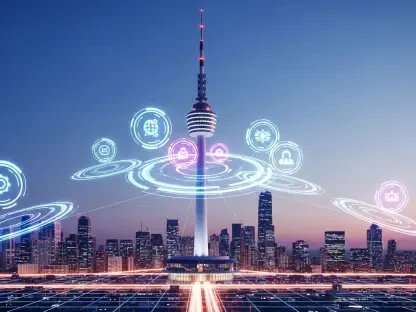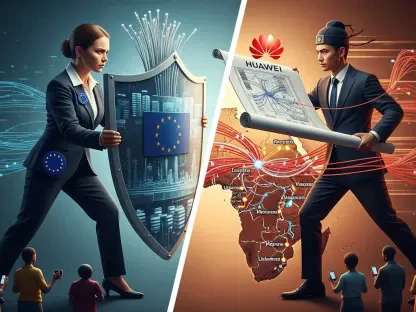Listen to the Article
In a world where businesses are built on the internet, the next generation of digital services (from cloud computing to IoT and AI) demands faster speeds, lower latency, and greater reliability than ever before. At the core of this transformation are telecom providers, or network carriers, that are rapidly expanding their fiber networks and 5G capabilities to power what many call the next “digital economy.”
This article will explore how fiber, 5G, and emerging technologies are enabling telecom providers to fuel enterprise innovation and what you, as a business leader, need to know to stay competitive in this evolving landscape.
Foundations for a Fiber-first Future
Fiber-optic networks are the foundation of today’s digital economy. Unlike copper cables, which have a limit to how much data they can carry, fiber transmits information as light signals, making data travel faster and farther. Its virtually unlimited bandwidth, ultra-low latency, and ability to move large volumes of data are foundational to running cloud operations that depend on real-time collaboration, video conferencing, and AI processing.
According to a recent study by the Fiber Broadband Association and RVA, 76.5M US homes (56.5%) are now passed by fiber. This is thanks to a record-breaking year of new fiber passings—13% growth in 2024. But residential expansion is only half the story. For businesses, it enables symmetrical download and upload speeds, which are crucial for cloud storage, remote collaboration, and data-intensive applications.
Take Telecom giants like AT&T, Verizon, and Lumen Technologies, for instance. They are investing billions to upgrade metropolitan networks, densify downtown-area fibers, and even partner with municipalities to conduct smart city installations of infrastructure. AT&T just laid out a proposal worth $14 billion for the expansion of its fiber reach until April 2025, reaching 30 million locations by year-end 2025, a feat that it is achieving.
The bottom line: Fiber is not only about faster web surfing; it’s about preparing companies for a data-driven era where digital experiences, edge computing, and AI are everyday necessities.
The 5g Revolution: More Than Mobile Speed
While fiber operates quietly in the background to lay the groundwork, 5G certainly takes center stage (and rightly so). With speeds up to 100 times faster than 4G, sub-10 millisecond latency, and the ability to connect 1 million devices per square kilometer, 5G is making the previously impossible possible. This creation is not merely an improvement over 4G, but an offering that is an entirely new platform for innovation. Think real-time telemedicine, self-driving vehicle fleets, industrial automation, and fully immersive AR/VR applications—all at enterprise scale.
T-Mobile’s 5G network is already ahead of the game; as one of the best networks in the US, it covers over 330 million people across the country. This includes over 300 million people with coverage under its Ultra Capacity 5G technology, which boasts over 2x as much square mileage of coverage in comparison to the carrier’s closest competitors. Additionally, its standalone 5G deployments are gaining momentum nationwide.
Beyond 5g: New Frontiers in Telecom Innovation
As telecom providers scale fiber and 5G networks, they’re also pushing into uncharted territory. There are two major developments that are poised to shape the telecom landscape further, namely:
Satellite Internet for Business Continuity
Amazon’s Project Kuiper, OneWeb, and players like Starlink are ramping up low-Earth-orbit satellite deployments, making high-speed satellite internet a viable option for remote areas where fiber or 5G may not reach. Starlink, for instance, already boasts over 2.6 million subscribers globally as of early 2025 and recently launched a dedicated “Starlink Business” service, offering speeds up to 350 Mbps with priority bandwidth.
This means that for enterprises with remote branches, offshore operations, or disaster recovery needs, satellite connectivity can ensure an always-on internet connection, which is critical for maintaining operations amid terrestrial network outages.
Edge Computing Integration
As data demands explode, sending everything back to centralized cloud servers is increasingly inefficient. Therefore, Telecom operators are integrating edge computing nodes into their networks themselves, allowing data to be processed close to the source.
IDC forecasts that by 2026, 65% of global GDP will be driven by digitally transformed businesses using edge computing, and Telcos are positioning themselves as the prime facilitators of this transformation.
Verizon, for example, has partnered with AWS to launch Wavelength Zones, which will bring cloud services close to IoT devices and mobile users through the 5G network.
What Businesses Must Understand
For business leaders, these telecommunication advances aren’t optional upgrades but strategic imperatives, with the power to deliver:
Greater agility: With 5G and fiber networks, businesses can develop new services in a rapid time, move operations, and support remote workforces with high-quality, seamless connectivity.
Improved customer experiences: High reliability and ultra-low latency enable businesses to deliver improved digital experiences, from faster e-commerce websites to real-time assistance.
Cost effectiveness: AI optimization and edge computing reduce data transit costs and downtime, improving competitiveness and margins.
Resilience: Private 5G networks and satellite internet guarantee business continuity with redundancy and disaster recovery.
In the logistics, healthcare, finance, and manufacturing sectors, telecom modernization is not about keeping pace—it’s a path to a competitive advantage.
Challenges Ahead: Why Strategic Partnerships Are Necessary
However, fully achieving the potential of fiber, 5G, and beyond is not without challenges. Probable obstacles include:
Regulatory challenges: Spectrum allocation, municipal permitting for fiber installations, and cross-border data regulations continue to create friction.
Security threats: New networks introduce new vulnerabilities. Companies must think beyond firewalls and implement holistic, Zero Trust security frameworks.
Integration complexity: Consuming fiber, 5G, satellite, and edge solutions in a manner that is comprehensively integrated and seamless takes technical expertise and planning.
Visionary businesses aren’t navigating telecom transformation in isolation. They’re partnering with providers that offer end-to-end solutions.
Giants the likes of Ericsson, Cisco, and Dell Technologies are positioning themselves not just as equipment vendors, but as co-innovation partners in telecom-led digital transformation.
Conclusion: Telecom as a Driver of the Next Digital Economy
In the future, this much is certain: Telecom operators will no longer be simply infrastructure players. They will be enablers of strategic growth, innovation, and resilience, and they’re laying the foundation for humongous data flows and the use of technologies like satellite internet and edge computing.
For businesses, the moment is now to reconsider their connectivity strategy, not as a cost of utility but as an essential investment in digital competitiveness. Because in the next digital economy, speed, resilience, and agility won’t be differentiators—they’ll be requirements.
Telecom operators are bringing that future to life. The question is: Are you ready to embrace it?
